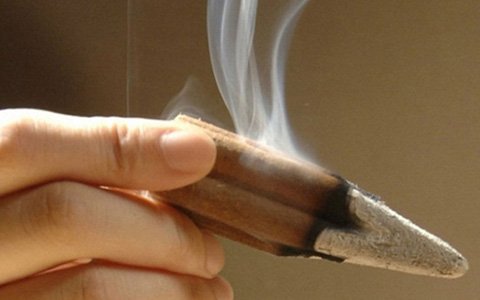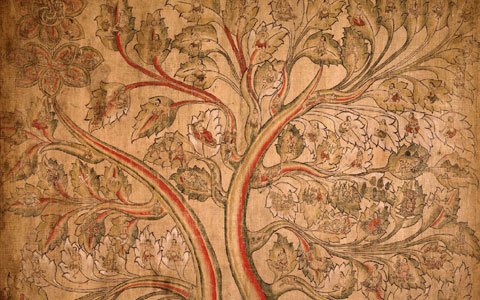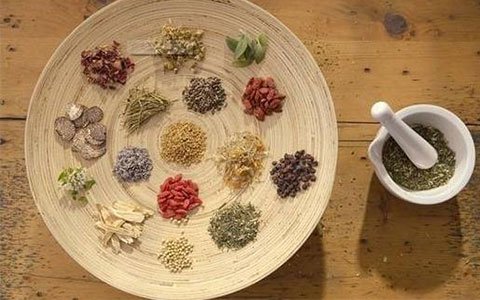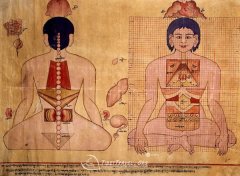Tibetan Medicine
Having been practiced for thousands of years, traditional Tibetan medicine (TTM) has thoroughly incorporated the essence of traditional Chinese medicine (TCM), ancient Indian medication, and classic Arabic medicament and formed its own medical system. Two thousand years ago, Tibetan people have already accumulated some pharmacological knowledge and been aware of the medical functions of plants, animals, and minerals while hunting for food on the Qinghai-Tibet Plateau. Using ghee to stop bleeding is a good case in point.
Here we will introduce you to the basics of Tibetan medicine and give you a firsthand understanding of this mysterious medical system in the world.
What is Tibetan medicine? What are Tibetan medicines made of?
Tibetan medicine is a kind of medical humanities that fuses ancient philosophy, astronomy, biology, physics, and chemistry altogether and closely connects with Tibetan Buddhism. It’s truly reflected the history and culture of Tibet in the field of medicine.
Tibetan medicine has a long history as well as a complete theoretical system and abundant clinical practices. The herbs utilized in Tibetan medicine are collected from high altitudes, of which effective composition and biological activity are much higher than similar drugs.
Without being polluted, Tibetan herbs are immune to drug-induced diseases. It caters to people’s pursuit of health and natural medicine.
There are more than 2,000 kinds of plants, 159 species of animals, and 80 sorts of minerals in Tibet available for pharmaceutical production, making Tibetan medicine superior to any other ethnic medicines in the world.
How old is Tibetan medicine?
Tibetan medicine is very ancient, which can date back thousand years ago. Tibetans had unveiled the mysteries of human embryology as early as the 8th century and made significant achievements in human physiology, pathology, anatomy, and pharmacology, etc.
In the 8th century, Yutok Yonten Gonpo, the founder of Tibetan medicine, had learned a lot from Chinese, Arabic, and Indian medicine. Integrating his own experience with those traditional medical sciences, he compiled a Tibetan medicine masterpiece, that is, The Four Medical Tantras.
The Four Medical Tantras later became the encyclopedia of Tibetan medicine, he most systematic, complete and fundamental set of theories in Tibetan medicine.
Since the master taught students in the Namye Valley in the south Mainling County, treating patients and spreading his theories out, the small village is known as the birthplace of Tibetan medicine.
What are the principles of Tibetan medicine?
According to Tibetan medicine theory, the human body is composed of three humors (RLung, MKhris-pa, Bad-kan), seven substances (diet, flesh, blood, fat, bone, bone marrow, and seminal fluid), and three excrements (sweat, urine, and stool).
Three factors dominate the operation and changes of seven substances and three excrements. Rlung is responsible for the movement of the body and food transportation; Mkhris-pa is for mediation of body temperature and food digestion; and Bad-kan is for personality, sleep, and liquid delivery.
The reason why people fall sick lies in the influence of the environment, climate, and diet as well as the unbalance among three factors.
Diagnostic methods of Tibetan medicine refer to observation, listening, interrogation, and pulse-taking and stress the changes in coated tongue and urine for the first time in the morning.
The diseases are classified into two groups: heat symptoms and cold symptoms. Tibetan medicine treatments include but are not limited to: acupuncture, moxibustion, bleeding, cupping and Tibetan medicated bath, etc.
What are Tibetan medicines made of?
Over 1,400 common medications are also available for people to take, a large part of which are the specialties on the Qinghai-Tibet Plateau.
In Tibetan medicine, Tibetan herbal remedies consist of five elements, namely, soil, water, fire, wind, and space. Soil is the fundament for herbs growth; water is the moisture herbs need; fire offers heat; the wind is the power for movement; space provides necessary room for herbs’ development.
The six flavors of drugs (sweet, sour, bitter, pungent, salty, and acerbic) also come from a different combination of five elements.
The famous and precious herbal remedies in Tibetan medicine include Rhodiola, cordyceps, snow lotus, and so on.
Why Tibetan medicinal bath was listed as the intangible world cultural heritage?
In 2018, the Lum medicinal bathing of Sowa Rigpa was selected by the Review as a World for Intangible Cultural Heritage.
It is one of the traditional external therapies of Tibetan medicine, combining traditional Tibetan medicine and the rich geothermal resources of hot springs on the Tibetan Plateau, allowing the patient to soak in a warm medicinal liquid and be treated by thermal energy.
It embodies both the folk experience of the Tibetan people in preventing and treating disease through bathing and the inheritance and development of traditional Tibetan medical theory in contemporary health time, as represented by the Four Medical Tantras.
Most Read Articles about Tibetan Medicine
Tibetan medicine, with thousands of years of history, is a unique system of medicine developed by the Tibetan people who have explored their unique natural environment. Here is our selection of the four most-read articles. They include both an introduction to the principles of Tibetan medicine as well as a detailed description of the traditional Tibetan medicinal healing that was listed as a World Intangible Cultural Heritage.
Most Popular Tibet Small Group Tour Packages
No matter you are a solo traveler or will travel with your friends or relatives to Tibet, the small group tour is the most affordable and exhilarating way to enjoy the adventure with like-minded global travels in Tibet. We present you with the top 14 popular Tibet small groups for you. From the most classic 4-day tour in Lhasa to epic Lhasa to EBC or Mt.Kailash tour and overland journey to Nepal and beyond, you will have a journey of a lifetime in Tibet, with our expert team’s support and attentive one-stop services.
-
 8 Days Lhasa to Everest Base Camp Small Group Tour: Marvel at Mt.Everest Real Close from 4 Different Viewing Platforms
8 Days Lhasa to Everest Base Camp Small Group Tour: Marvel at Mt.Everest Real Close from 4 Different Viewing PlatformsLhasa - Gyantse - Shigatse - Everest Base Camp - Shigatse - Lhasa
From USD939 p.p
View Details -
 7 Days Lhasa to Kathmandu Overland Small Group Tour: Traverse from the North Side to the South Side of Mt.Everest for the Best of the Himalayas
7 Days Lhasa to Kathmandu Overland Small Group Tour: Traverse from the North Side to the South Side of Mt.Everest for the Best of the HimalayasLhasa - Gyantse - Shigatse - Everest Base Camp - Gyirong - Kathmandu
From USD979 p.p
View Details -
 15 Days Kailash and Manasarova Small Group Tour: A pilgrim’s final fantasy and the greatest overland trip in Tibet.
15 Days Kailash and Manasarova Small Group Tour: A pilgrim’s final fantasy and the greatest overland trip in Tibet.Lhasa - Gyantse - Shigatse - E.B.C - Saga - Kailash Trek - Darchen - Lake Manasarovar - Saga - Gyirong - Tingri - Lhasa
From USD2059 p.p
View Details -
 10 Days Lhasa to Everest Base Camp and Namtso Lake Small Group Tour
10 Days Lhasa to Everest Base Camp and Namtso Lake Small Group TourLhasa - Gyantse - Shigatse - EBC - Shigatse - Lhasa - Namtso Lake - Damxung - Lhasa
From USD1289 p.p
View Details -

-
 8 Days Driving Across Himalaya Overland Adventure from Kathmandu to Lhasa
8 Days Driving Across Himalaya Overland Adventure from Kathmandu to LhasaKathmandu - Gyirong - Everest Base Camp - Tingri - Shigatse - Gyantse - Lhasa
From USD1069 p.p
View Details -
 6 Days Central Tibet Culture Small Group Tour: Explore Tibet's religion, cultural gems, and captivating landscapes.
6 Days Central Tibet Culture Small Group Tour: Explore Tibet's religion, cultural gems, and captivating landscapes.Lhasa - Gyantse - Shigatse- Lhasa
From USD799 p.p
View Details -
 6 Days Travel to Sky Lake - Lhasa and Lake Namtso Small Group Tour
6 Days Travel to Sky Lake - Lhasa and Lake Namtso Small Group TourLhasa - Namtso Lake - Damxung - Lhasa
From USD779 p.p
View Details


.jpg)







0 Comment ON "Tibetan Medicine"